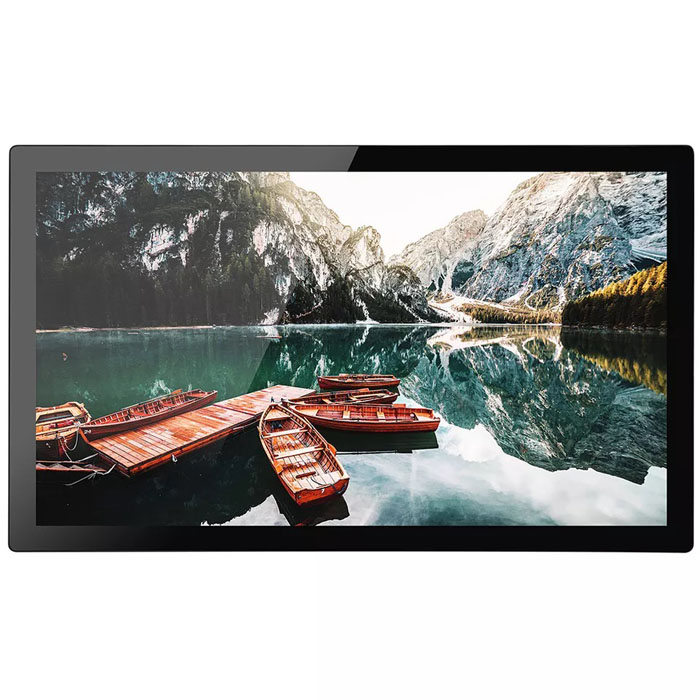Sunlight readable monitors are specially designed displays that remain clearly visible in bright outdoor environments, where standard monitors would typically become washed out or difficult to read due to glare and reflections. These monitors are essential for outdoor applications such as digital signage, kiosks, marine navigation, and industrial control systems.
What are Sunlight Readable Monitors?
Sunlight readable monitors, also known as high-brightness displays, are designed to provide optimal visibility in direct sunlight or bright ambient light conditions. They achieve this through increased brightness levels, anti-reflective coatings, and other optical enhancements.
Benefits of Sunlight Readable Monitors
Enhanced Visibility
High Brightness: These monitors typically offer brightness levels of 1000 nits or higher, compared to standard monitors that range from 200 to 300 nits.
Anti-Reflective Coatings: Reduce glare and reflections, making the screen easier to read even in direct sunlight.
Optical Bonding: This process eliminates the air gap between the display and the cover glass, reducing internal reflections and improving contrast.
Durability and Reliability
Robust Construction: Built to withstand harsh outdoor conditions, including temperature extremes, humidity, and physical impacts.
Weatherproofing: Many models are designed with weatherproof housings and IP ratings to protect against dust and moisture.
Versatility
Wide Range of Applications: Suitable for various outdoor and industrial applications where visibility is critical.
Multiple Sizes and Formats: Available in various sizes and aspect ratios to fit different installation requirements.
Applications of Sunlight Readable Monitors
Outdoor Digital Signage
Used in advertising, information kiosks, and wayfinding systems to ensure messages are visible to passersby in bright daylight.
Marine and Boating
Essential for navigation systems and control panels on boats and ships, where screens must remain legible under direct sunlight.
Transportation
Deployed in train stations, bus stops, and airports for timetables, ticketing machines, and information displays.
Industrial and Manufacturing
Used in outdoor control systems, monitoring stations, and other industrial applications where operators need to read screens clearly in bright conditions.
Public Spaces and Events
Ideal for outdoor events, sports arenas, and public spaces where information needs to be visible to large audiences.
Installation and Maintenance
Installation Steps
Site Preparation: Ensure the installation site is suitable for the monitor, including considerations for sunlight exposure, power supply, and connectivity.
Mounting: Use appropriate mounting hardware and techniques to securely install the monitor, ensuring it is stable and properly positioned.
Connection: Connect the necessary data and power cables, ensuring all connections are secure and protected from the elements.
Mounting
Mounting Hardware: Choose appropriate mounting hardware based on the installation environment. Wall mounts, pole mounts, and custom enclosures are common options.
Secure Installation: Make sure the monitor is securely fastened to prevent movement or vibration, which could affect performance and longevity.
Angle and Orientation: Position the monitor to optimize visibility and reduce glare. Sometimes, tilting the monitor slightly can help minimize reflections.
Connection
Data Cables: Securely connect data cables and protect them from environmental exposure. Use weatherproof grommets or conduits where necessary.
Power Cables: Ensure power cables are properly connected and insulated. Consider using surge protectors to protect the monitor from power spikes.
Maintenance Tips
Regular Cleaning
Screen Cleaning: Use a soft, lint-free cloth and a mild cleaning solution to clean the screen. Avoid abrasive materials that could scratch the surface.
Housing and Vents: Clean the exterior housing and ventilation openings regularly to prevent dust buildup that could affect cooling.
Inspect Seals and Housings
Weatherproofing: Periodically inspect the seals and weatherproof housings to ensure they remain intact and effective. Replace any damaged seals promptly.
Structural Integrity: Check for any signs of wear or damage to the monitor’s housing and mounting hardware.
Software and Firmware Updates
Regular Updates: Keep the monitor’s firmware and any associated software up to date to ensure optimal performance and security.
Network Security: For connected monitors, ensure network security protocols are in place to protect against unauthorized access.
Heat Management
Cooling Systems: Ensure that any built-in cooling systems (fans, heat sinks) are functioning properly. In hot environments, additional shading or ventilation may be necessary.
Specific Use Cases for Sunlight Readable Monitors
Outdoor Digital Signage
Advertising: Bright, eye-catching displays that remain visible in direct sunlight are ideal for advertising in high-traffic areas.
Wayfinding: Interactive kiosks and maps that help people navigate large outdoor spaces like parks, campuses, and city centers.
Marine and Boating
Navigation Systems: Essential for displaying navigation charts and data clearly in bright, reflective environments on the water.
Control Panels: Used on boats and ships for monitoring and controlling various systems, ensuring visibility in all lighting conditions.
Transportation
Timetables and Schedules: Displays in train stations, bus stops, and airports need to be readable in bright daylight to provide accurate schedule information to travelers.
Ticketing Machines: Outdoor ticketing and vending machines equipped with sunlight readable monitors ensure usability in all weather conditions.
Industrial and Manufacturing
Outdoor Control Panels: Used in industrial settings for monitoring and controlling processes in outdoor environments.
Monitoring Stations: Essential for real-time data display in locations like oil rigs, mining operations, and construction sites.
Public Spaces and Events
Outdoor Events: Sunlight readable screens are used in sports arenas, outdoor concerts, and festivals to display information, advertisements, and live footage.
Public Information Displays: Used in city centers and public parks to provide information on events, weather, and public announcements.

